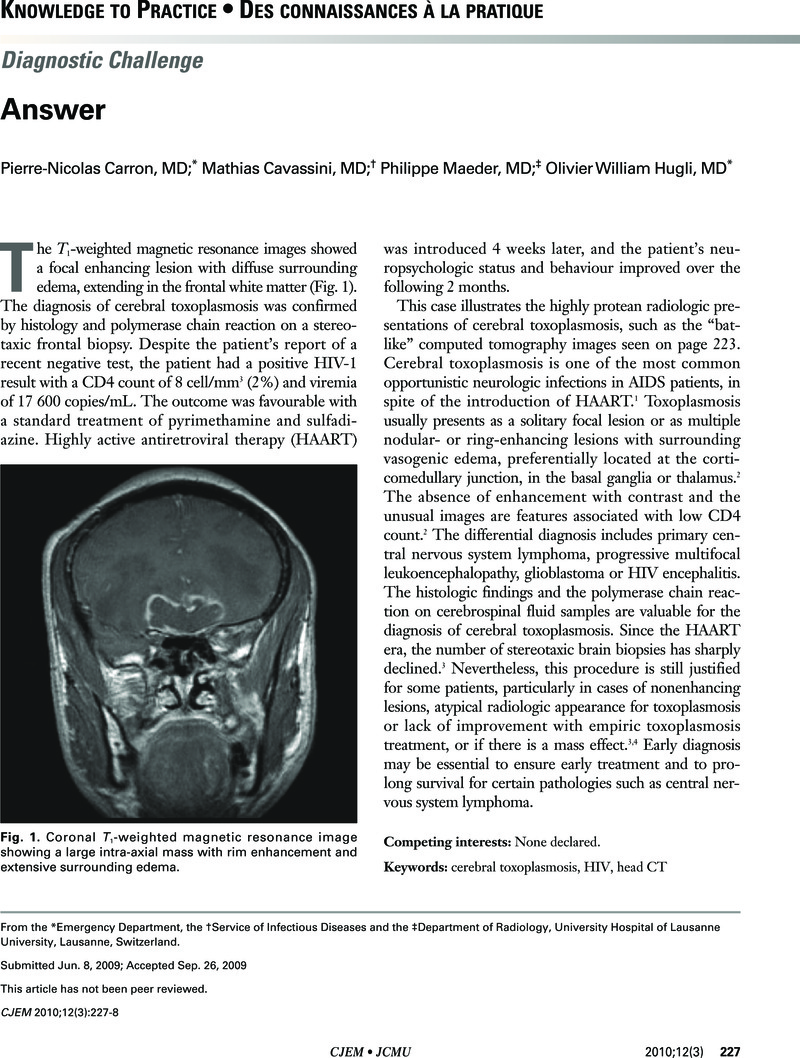No CrossRef data available.
Article contents
Answer
Published online by Cambridge University Press: 21 May 2015
Abstract
An abstract is not available for this content so a preview has been provided. As you have access to this content, a full PDF is available via the ‘Save PDF’ action button.

Keywords
- Type
- Knowledge to Practice • Des connaissances à la pratique
- Information
- Copyright
- Copyright © Canadian Association of Emergency Physicians 2010
References
REFERENCES
1.Ammassari, A, Cingolani, A, Pezzotti, P, et al.AIDS-related focal brain lesions in the era of highly active antiretroviral therapy. Neurology 2000;55:1194–200.Google Scholar
2.Offiah, CE, Turnbull, IW. The imaging appearances of intracranial CNS infections in adult HIV and AIDS patients. Clin Radiol 2006;61:393–401.Google Scholar
3.Rosenow, JM, Hirschfeld, A. Utility of brain biopsy in patients with acquired immunodeficiency syndrome before and after introduction of highly active antiretroviral therapy. Neurosurgery 2007;61:130–40.Google Scholar
4.Gildenberg, PL, Gathe, JC, Kim, JH. Stereotactic biopsy of cerebral lesions in AIDS. Clin Infect Dis 2000;30:491–9.CrossRefGoogle ScholarPubMed




